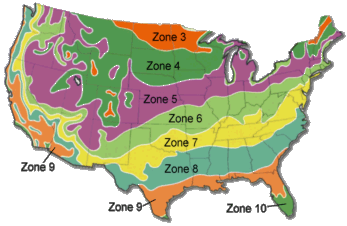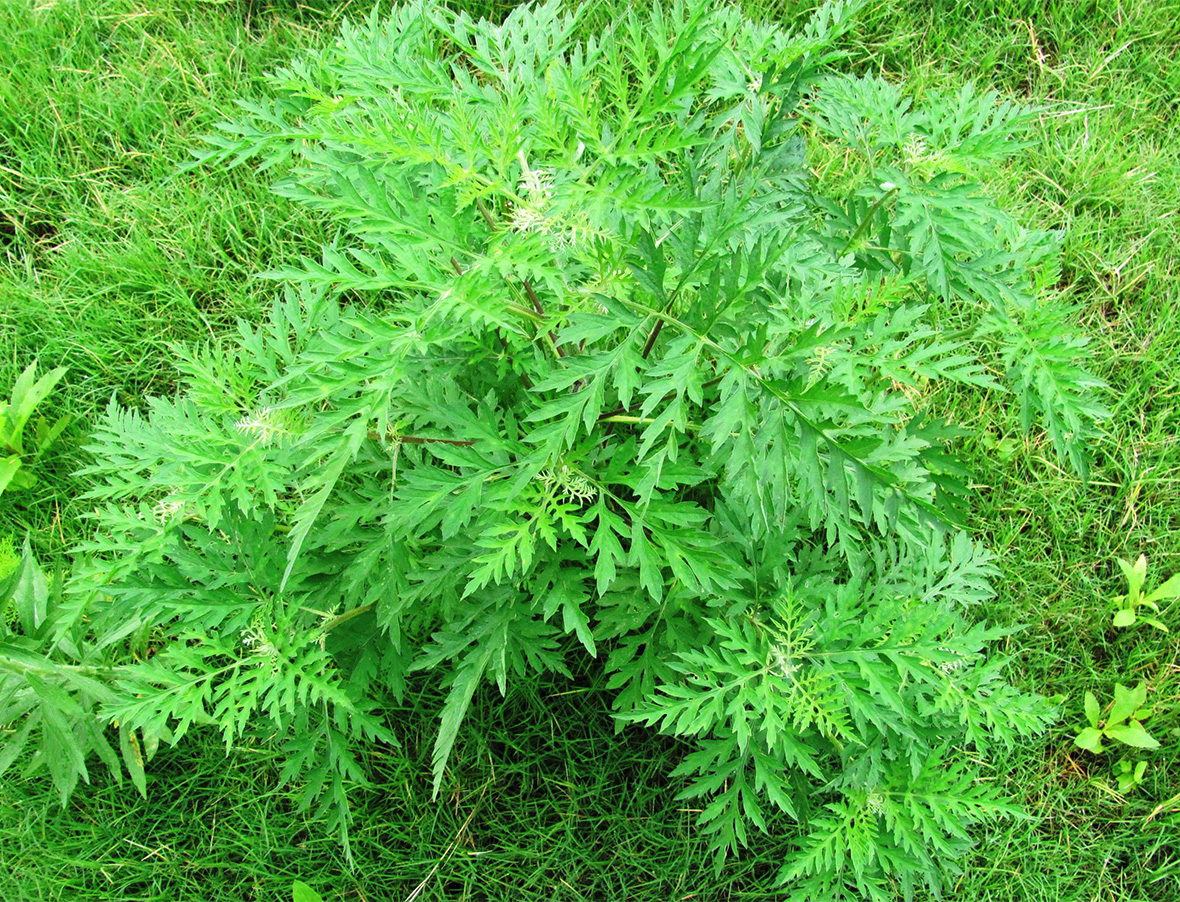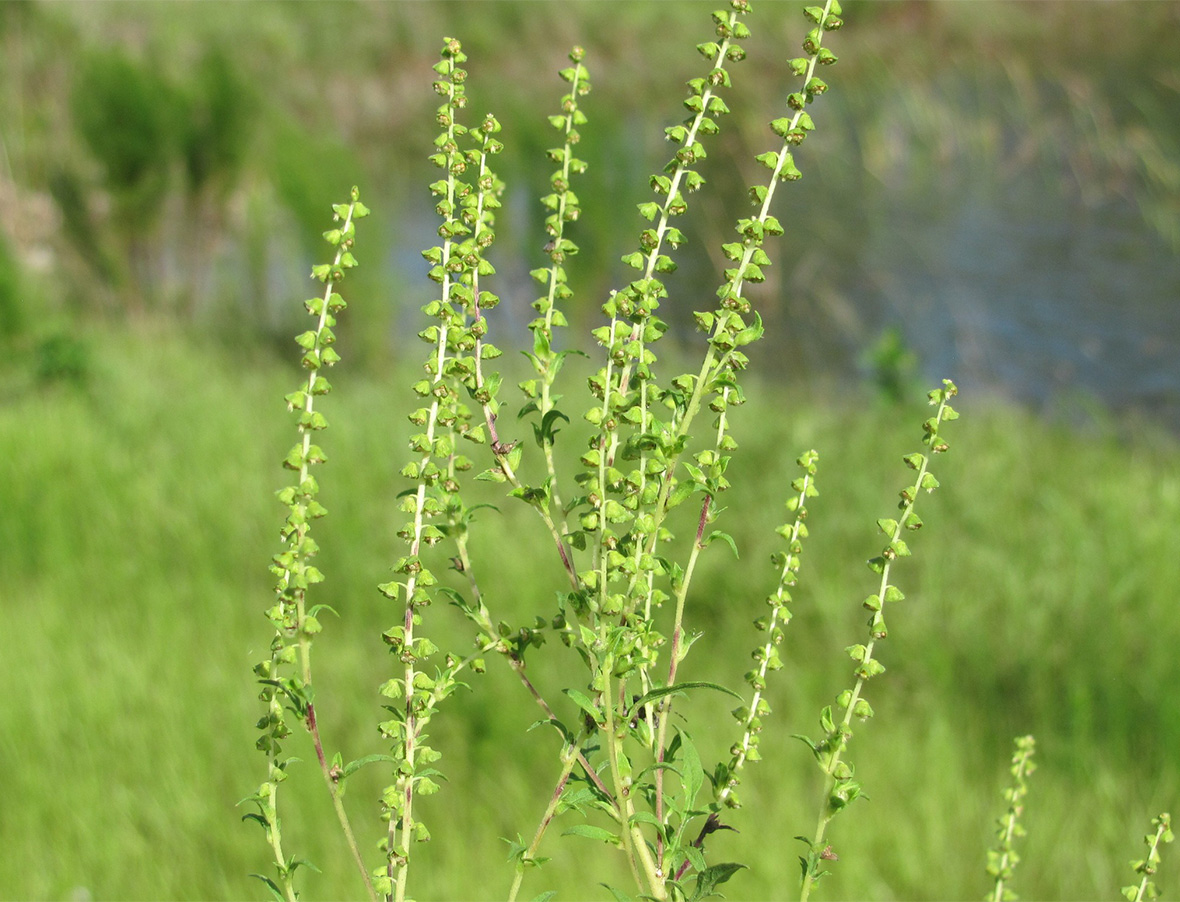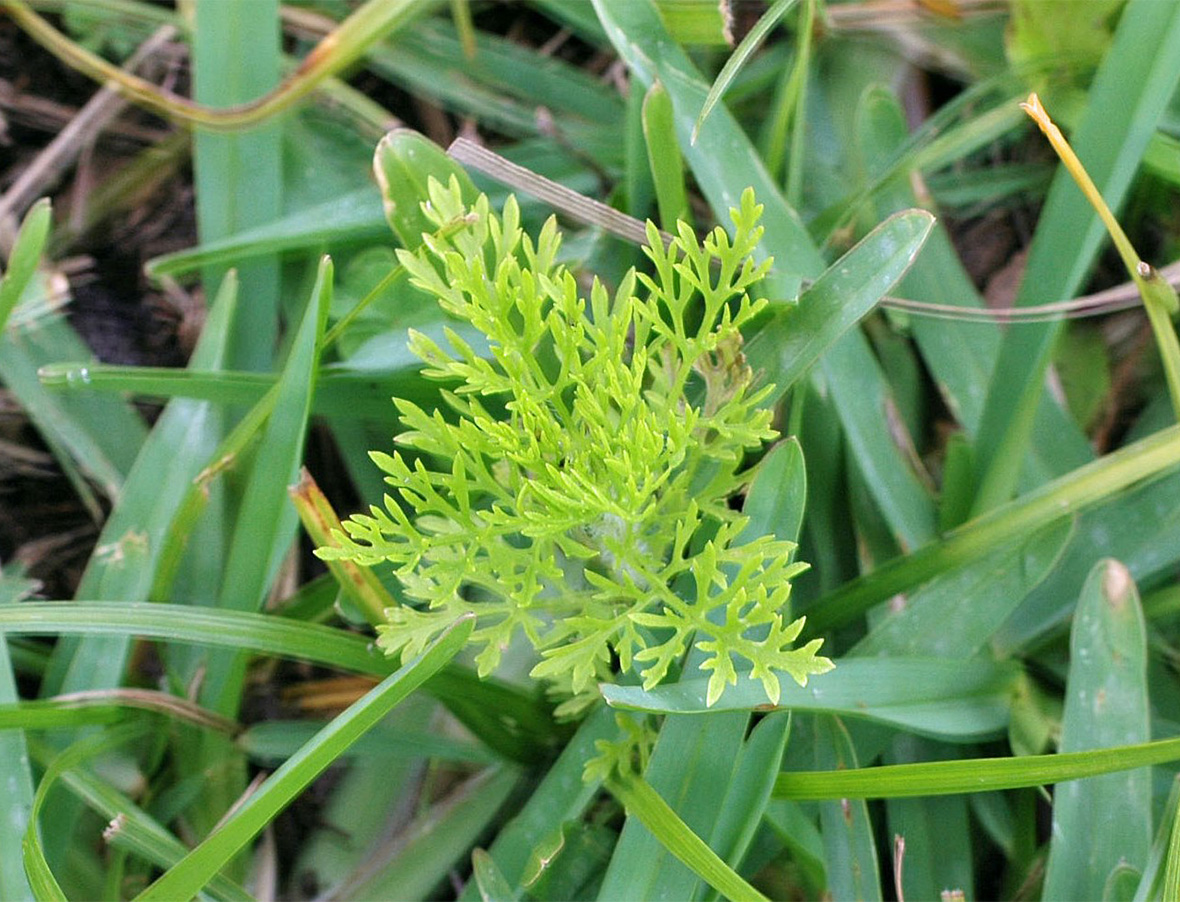Ragweed
Scientific Name: Ambrosia artemisiifolia
Also Known As: Roman ragweed, Annual ragweed, Low ragweed, short ragweed, Small ragweed, Common ragweed
Weed Family: Asteraceae
Description
Erect 3.3 to 10 ft. (1-3 m) tall, taprooted late-summer annual with upright, branched stems forming a bushy rounded top, stems hairy early, becoming smooth. Leaves hairy, deeply twice dissected; opposite basally, alternate upward, appearing ragged. Foliage fragrant when crushed. Male and female flowers separate, green. Male flowers to tiny saucer-shaped heads. Flowers in spikelike racemes, erect to drooping, flowering late summer until frost. Pollen is common cause of hay fever. Giant Ragweed (A. trifida L.) is similar except larger. 3.3 to 20 ft. (1-6 m) tall, leaves opposite and three to five lobed instead of alternate and deeply twice dissected with Common Ragweed. Early inhabitant in disturbed fields, pastures, roadsides, and waste areas. Propagation: Seed.Weed Photos: Courtesy of Dr. Lambert McCarty. Clemson University. Clemson, SC.
Herbicide Use
Postemergence control with repeat applications of two- or three-way mixtures of 2,4-D, Dicamba, MCPP or MCPA. Repeat applications of mixtures of 2,4-D, carfentrazone, dicamba, MCPP, MCPA, and/or sulfentrazone. Other postemergence options include triclopyr alone or combined with 2,4-D. Check the herbicide label for specific application rates and turfgrass tolerance before use. Distribution
Germination Dates

Recommendations
Post-Emergent
PowerZone® Broadleaf Herbicide
Q4® Plus Turf Herbicide for Grassy & Broadleaf Weeds
SpeedZone® Broadleaf Herbicide for Turf
SpeedZone® Southern Broadleaf Herbicide for Turf
SpeedZone® Southern EW Broadleaf Herbicide for Turf
Super Trimec® Broadleaf Herbicide
Surge® Broadleaf Herbicide for Turf
Trimec® 1000 Low Odor Broadleaf Herbicide
Trimec® 992 Broadleaf Herbicide
Trimec® Bentgrass Formula Broadleaf Herbicide
Trimec® Classic Broadleaf Herbicide
Trimec® Encore® Broadleaf Herbicide






